History of Savoonga
 Savoonga is a small Siberian Yupik village on the northern coast of St. Lawrence Island, in the Bering Sea. Closer to Russia than to the U.S., its name "Savoonga" literally means that a giant scooped the land out of the sea and wrung it out. If you look at the outline, you can see how that's possible!
Find it on the map right where the International Date Line veers west before angling south again.
Savoonga is a small Siberian Yupik village on the northern coast of St. Lawrence Island, in the Bering Sea. Closer to Russia than to the U.S., its name "Savoonga" literally means that a giant scooped the land out of the sea and wrung it out. If you look at the outline, you can see how that's possible!
Find it on the map right where the International Date Line veers west before angling south again.
(Go ahead. I'll wait.)
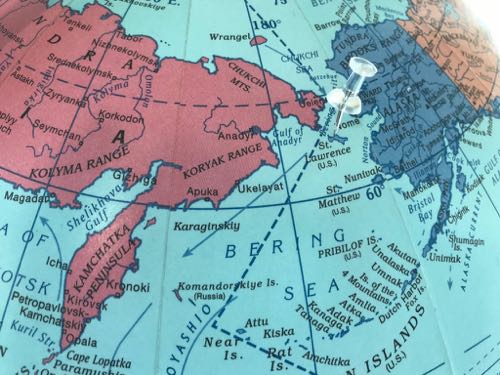
St. Lawrence Island has been inhabited for 2000+ years, and used to be home to thousands of people, each divided into clans or tribes. In the late 1870s, famine hit the island with a powerful blow, decimating the population.
In response, Theodore Roosevelt sent reindeer in 1903 to the Island as a food resource for the survivors who were nearly all Siberian Yupik, to help restore stability. In 1916, the area near what is now Savoonga became a reindeer camp, and by 1917, the reindeer population had multiplied into the thousands. Savoonga was first acknowledged on the U.S. Census in 1930. Reindeer were nearly gone by the 1950s, then increased again in the 1970s. It remains a food source to this day, but they remain more in the mountains, slightly inland, feeding on the lichen there.
Economy
Whale baleen was highly profitable with commercial vessels traveling to the island in the 1890s, and it was used for an array of common items in clothing, fishing poles and household objects. In the 1920s the indigenous economy consisted of trapping and selling Arctic foxes for $60/ pelt but that market faded in the 1930s (now they simply shoot them and don't seem too concerned about collecting the pelts). Most villagers shared what they hunted; a whale could feed the entire community and then some. It is still important to share meat from the hunt; and I love this idea – if men want to marry their girlfriend, they have to work for her parents for a year before the wedding. Providing meat from hunting is a critical aspect of this time period, to prove their worth and ability to take care of the daughter!


Two current villages
There are currently two villages on the island, Gambell and Savoonga, each with around 700 villagers. There is no road between the villages, but locals maneuver their ATVs through the seemingly impossible terrain of rocks, quaggy tundra, snow, and rivers for 5-6 hours one way. Some travel by boat if possible. Several people I've met have partners or spouses from Gambell, so they have faithfully made the journey many times, often with family and small children piled on!
In Alaska, mail used to be delivered by dogsled until 1963. That was when the last dogsled route, from Gambell to Savoonga, was converted into an airplane route. There are no more dogsleds here, only ATVs and snowmobiles. As for boating, no more skin boats are in use, as they now rely on motorized skiffs for travel to camps along the island, for hunting whales, walrus, and seal, and for fishing.
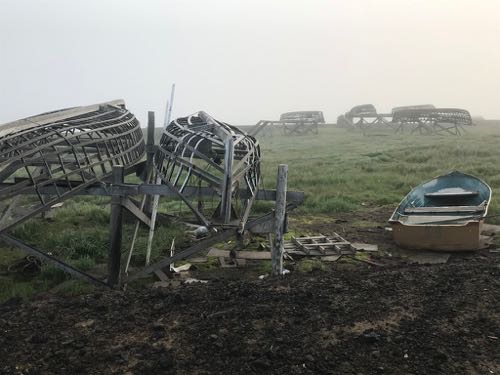
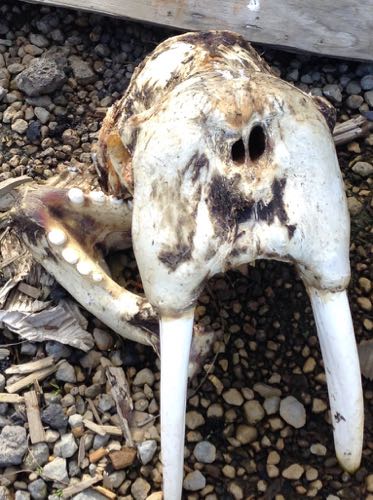

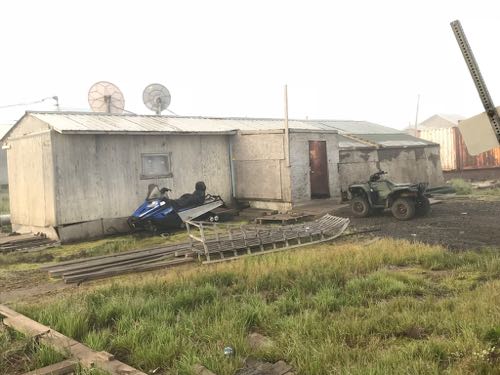
Many stories are told about how, in the time of dogsleds, there was no need for money because they could feed their dogs from the meat they hunted. This meat included whale, seal, walrus, and reindeer, while birds provided food in the season between ice and open water. Now, with ATVs and snow machines, locals need money for fuel. Needing money puts many at a disadvantage when there is little consistent work, and life still flows with the seasons. Imagine the ripple effects of this shift in survival, moving away from the sharing and bartering system of old – although we have experienced some of this hospitality with locals bringing us meat and checking in to see how we are doing. ATVs are used for everything, including entertainment, and you can hear them at all hours of the day.
Having money spurs the desire to buy ready-made foods and clothing; phones aren't publicly seen as much as in other places since connectivity isn't the greatest, but satellite dishes are sprinkled throughout the village. Despite the continued importance of hunting, this once-completely subsistence community is now bridging the old and new, in ways that seem to this outsider at once saddening and inevitable.

There is one store, and a small, sometimes-open shop that has a handful of items, depending upon the day of the week. Prices are very high: a gallon of water costs $10.49 and a box of Bisquick, for example, costs $15.25. There are no businesses like a hair salon (so we could be entrepreneurial, I suppose, with our hair dye skills), restaurant or coffee shop, for those who were considering a Starbucks detox.
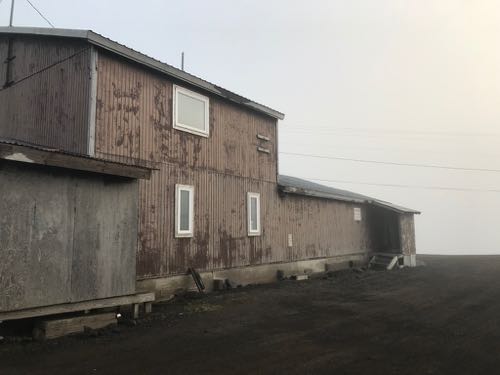
Today's Tweet
No more bird-skin parkas sewn together from the tiny skins (and even worn as underwear!). Savoonga, land bridge remnant and perfect metaphor for Bridging Old and New.


Comments